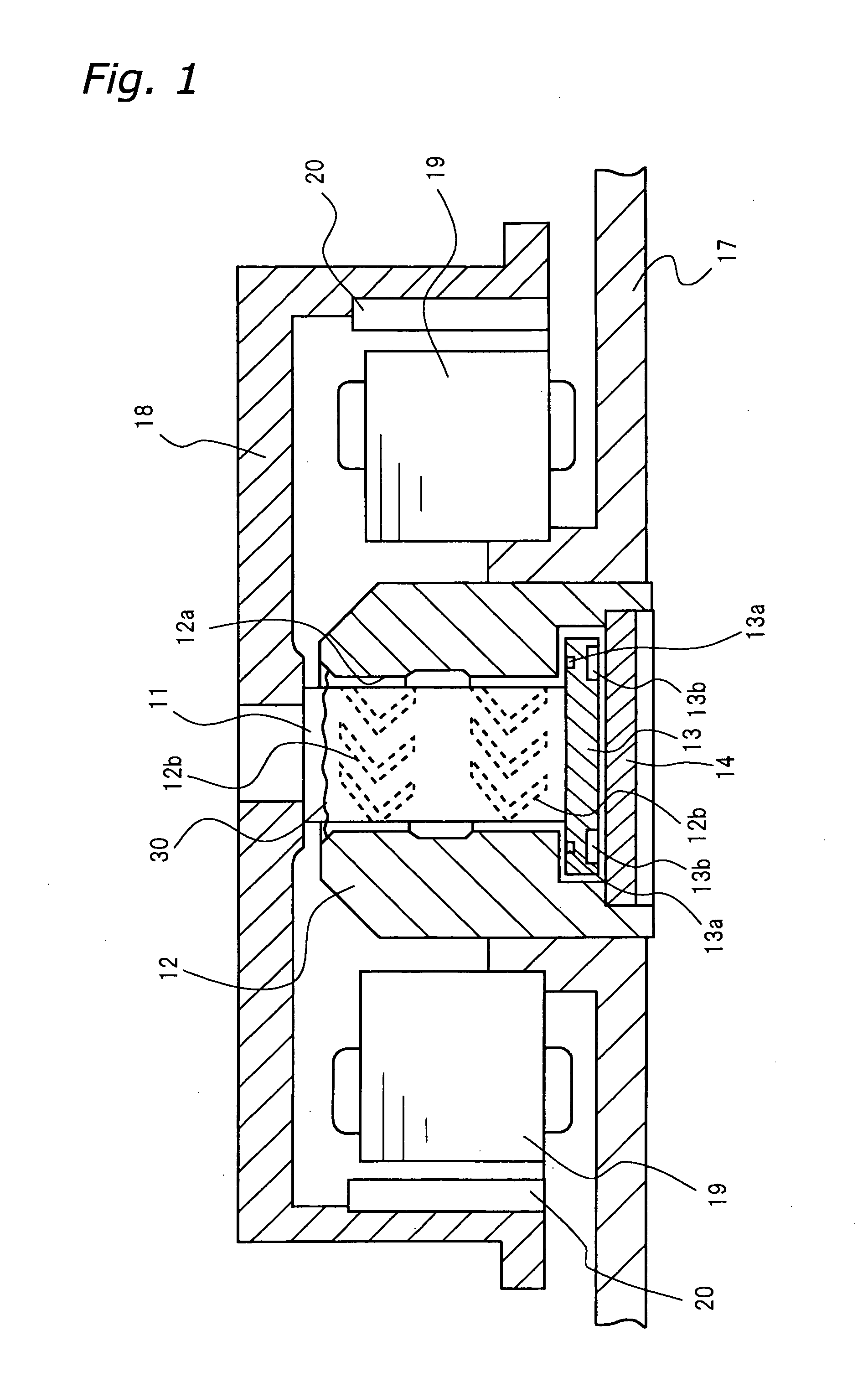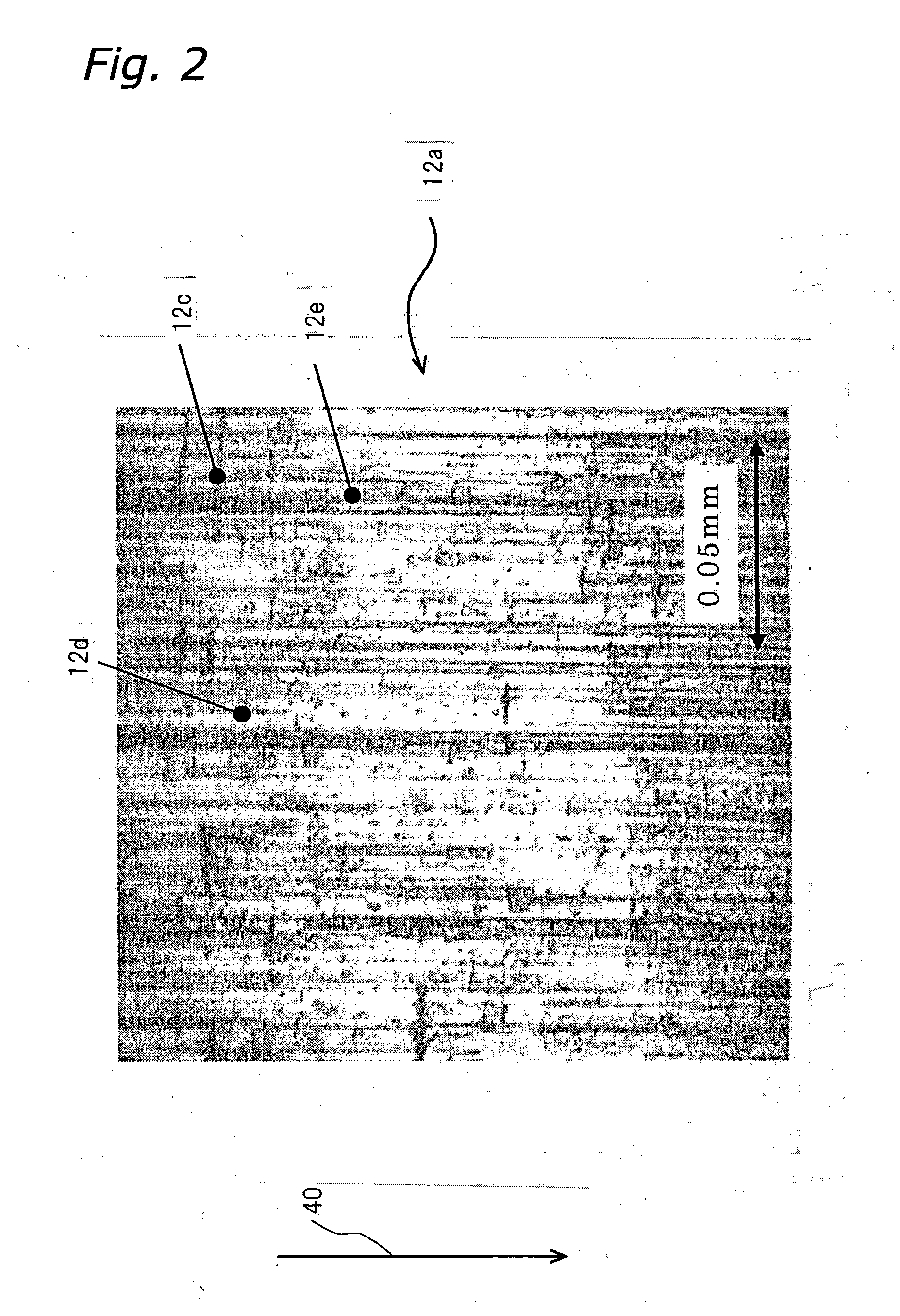Fluid dynamic bearing device
a dynamic bearing and bearing hole technology, applied in sliding contact bearings, mechanical equipment, rotary machine parts, etc., can solve the problems of low strength of manganese sulfide crystals, increased loss torque, and increased power consumption of motors, so as to reduce the surface roughness of bearing holes of sleeves, reduce cost, and reduce surface roughness
- Summary
- Abstract
- Description
- Claims
- Application Information
AI Technical Summary
Benefits of technology
Problems solved by technology
Method used
Image
Examples
first embodiment
[0045] The fluid dynamic bearing device of the first embodiment of the present invention will be described through reference to FIGS. 1 to 4. The present invention relates mainly to the material of the sleeve of a fluid dynamic bearing. FIG. 1 illustrates a fluid dynamic bearing device that is substantially the same in structure as the conventional fluid dynamic bearing device shown in FIG. 8, except that the various elements are numbered differently. In FIG. 1, a shaft 11 is rotatably inserted in a bearing hole 12a of a sleeve 12. The shaft 11 has a flange 13 formed integrally at the lower end in FIG. 1. The flange 13 is housed in a stepped portion of the sleeve 12, which is attached to a base 17, and the flange 13 is rotatably provided across from a thrust plate 14. A rotor hub 18 to which a rotor magnet 20 is fixed is attached to the shaft 11. A motor stator 19 located across from the rotor magnet 20 is attached to the base 17. Dynamic pressure generation grooves 12b are provided...
second embodiment
[0057] The fluid dynamic bearing device of the second embodiment of the present invention will be described through reference to FIGS. 5 to 7. This second embodiment relates to the material of the sleeve 12, and more particularly relates to the hardness of the material.
[0058] The step of forming the dynamic pressure generation grooves 12b on the inner peripheral face of the bearing hole 12a of the sleeve 12 in the first embodiment is performed using the apparatus shown in FIG. 5, which has substantially the same structure as the apparatus shown in FIG. 12 and described in the “Background Art” section. In FIG. 5, a known groove rolling tool 22 for the plastic working of the dynamic pressure generation grooves 12b is made up of a shank 23, a plurality of rolling balls 24, and a holder 25 for holding the rolling balls 24 on the shank 23. The diagonal length L of the rolling balls 24 is set to be greater than the inside diameter of the bearing hole 12a of the sleeve 12 by a length corr...
PUM
| Property | Measurement | Unit |
|---|---|---|
| width | aaaaa | aaaaa |
| width | aaaaa | aaaaa |
| roughness | aaaaa | aaaaa |
Abstract
Description
Claims
Application Information
 Login to View More
Login to View More - R&D
- Intellectual Property
- Life Sciences
- Materials
- Tech Scout
- Unparalleled Data Quality
- Higher Quality Content
- 60% Fewer Hallucinations
Browse by: Latest US Patents, China's latest patents, Technical Efficacy Thesaurus, Application Domain, Technology Topic, Popular Technical Reports.
© 2025 PatSnap. All rights reserved.Legal|Privacy policy|Modern Slavery Act Transparency Statement|Sitemap|About US| Contact US: help@patsnap.com



